
14 October 2024
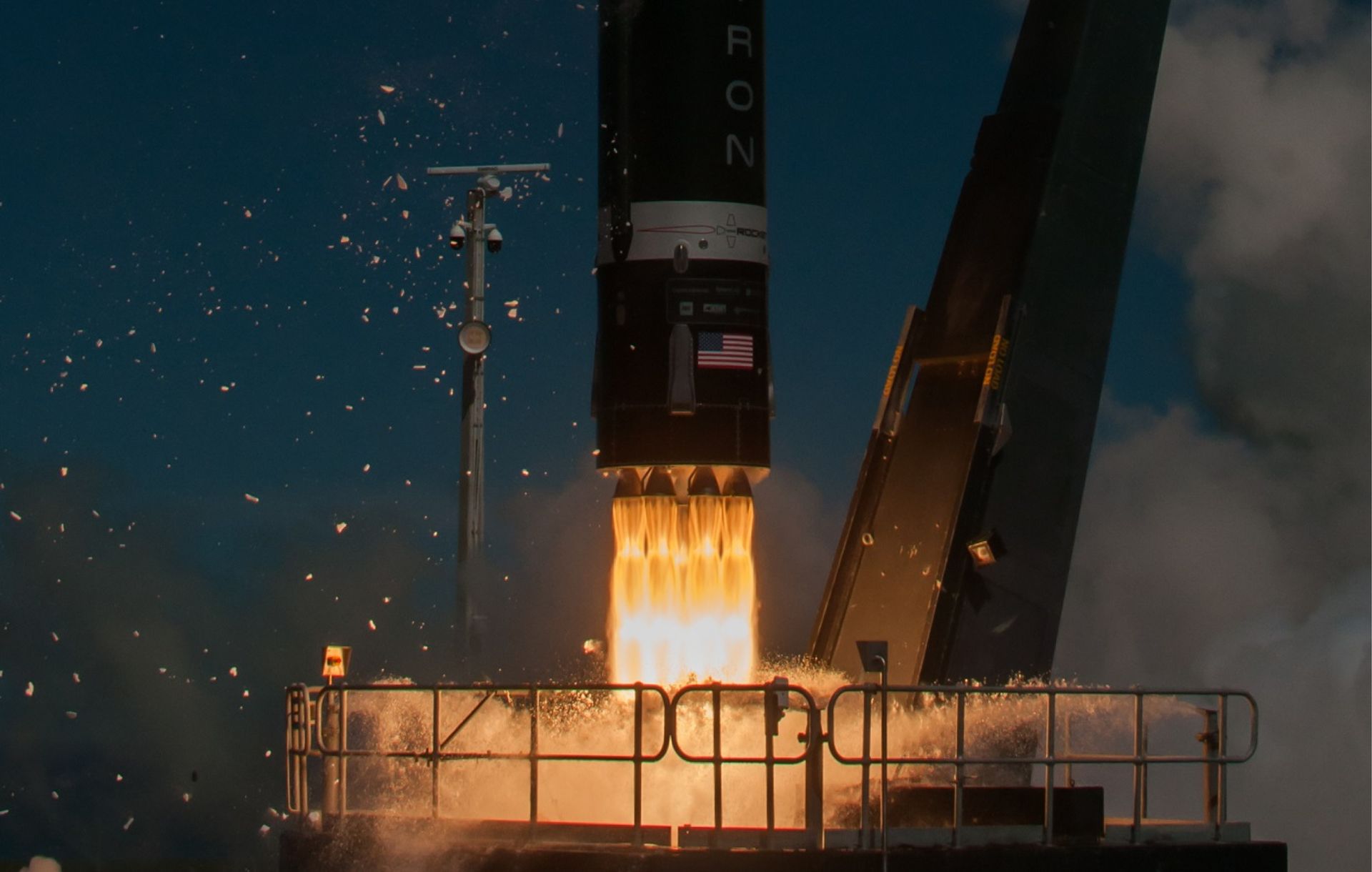
Rocket Lab secure Mars contract (Image: Andrew Burns and Simon Moffatt)
The space industry has been witnessing sustained growth in recent years, marked by increased accessibility and reduced costs in space launch, an increase in downstream satellite services and the starting of a new defining era in lunar and outer space exploration and utilisation. Economic analysts had previously forecast the insure to be worth $1 trillion by 2030, and more recently in April this year, the World Economic Forum, in partnership with Mckinsey & Co, have predicted the space economy to be worth $1.8 trillion by 2035.
This isn’t to say that there haven’t been turbulent times innocent years, in the backdrop of the Ukraine conflict and subsequent fuel crisis, as well as deepening economic and geological rivalries elsewhere. Nonetheless, according to Seraphim Space, space startups have raised $1.9 billion in funding in the third quarter this year up a fifth on the year previous. Strong performers have been in the launch market and satellite manufacturing, marking something in a change. Previous investments had been dominated by the data analytics and satellite-imaging.
The UK has also made commitments to enhancing its role in the space sector, announcing the return of its Fusion Connect with Capital Programme, an initiative designed to fast-track small businesses within six months. In addition, the Indian government announced on October 6 that it will provide $119 million to a venture capital firm to fund space startups. Meanwhile, the Australian Space Agency, in partnership with creative agency Amplify, has announced a series of Cultural Briefings aimed at keeping brands aware of cultural developments, with space being viewed as a next-generation-defining theme.
Through the challenges and hurdles, it seems that space exploration and the space industry continues to climb on the global radar.
Starship test launch success and new era of launch vehicles
It’s been a challenging time for the nascent commercial launch industry, if we don’t count SpaceX (although they have and are suffering with some issues relating to their workhorse Falcon-9). Since the failed launch which led to the bankruptcy of Virgin Orbit, the delisting of Astra (US), an unexpected explosion of Rocket Factory Augsburg’s RFA ONE last month and an accidental launch by China’s Space Pioneer in June, amongst others.
However, we also note much positive activity in the commercial launch market, as well as the reported uptick in investment. United Launch Alliance’s Vulcan Centaur launched on Oct. 4, a critical test flight that brings the vehicle closer to certification for carrying national security payloads. This second flight is a key milestone for ULA as it looks to solidify Vulcan Centaur’s role in future national defence missions.
Meanwhile, Dawn Aerospace showcased impressive rapid reusability with its Mk-II Aurora rocket-powered aircraft, conducting two flights within just eight hours from New Zealand’s Glentanner Aerodrome. These tests, reaching speeds of Mach 0.9 and altitudes of 63,000 feet, are part of the company's broader efforts to expand the vehicle’s performance envelope, with the successful demonstration of same-day reusability underlining the potential for cost-effective, rapid turnaround in spaceflight operations.
PLD Space is also ramping up its efforts with the unveiling of its latest strategic plan. One year after the successful launch of MIURA 1, the Spanish company is on track with its MIURA 5 program, aiming to kick off its launch campaign by 2025. Notable advancements include a new re-entry and recovery system for the MIURA 5 1.2 model, which promises enhanced orbital capabilities, increased payload capacity, and lower operational costs, paving the way for more frequent launches.
Additionally, Rocket Lab secured a NASA contract to study the retrieval of rock samples from Mars. This project is part of NASA’s Mars Sample Return (MSR) program, which could revolutionise our understanding of the Red Planet and potentially provide answers about the existence of life on Mars. The results of Rocket Lab’s study will help shape future missions aimed at bringing Mars samples to Earth, a pivotal step in preparing for human exploration of the planet. It also signals the ongoing commercialisation of space, with NASA reaching out to the private sector in order to rescue its troubled MSR programme.
On Oct. 13, SpaceX launched its fifth Starship vehicle, achieving the first-ever successful “catch” of its Super Heavy booster at the launch site. The primary goal of this attempt was to capture the Super Heavy booster using its "chopstick" mechanism, a pair of mechanical arms. The Starship’s first stage followed a similar trajectory to previous tests and completed a powered landing in the Indian Ocean. This success marks another major milestone in SpaceX’s pursuit of rapid, full reusability for the world’s largest space launch vehicle, and is promising news for NASA, which has contracted SpaceX to provide a version of Starship for the crewed Artemis III lunar landing, planned for 2026.
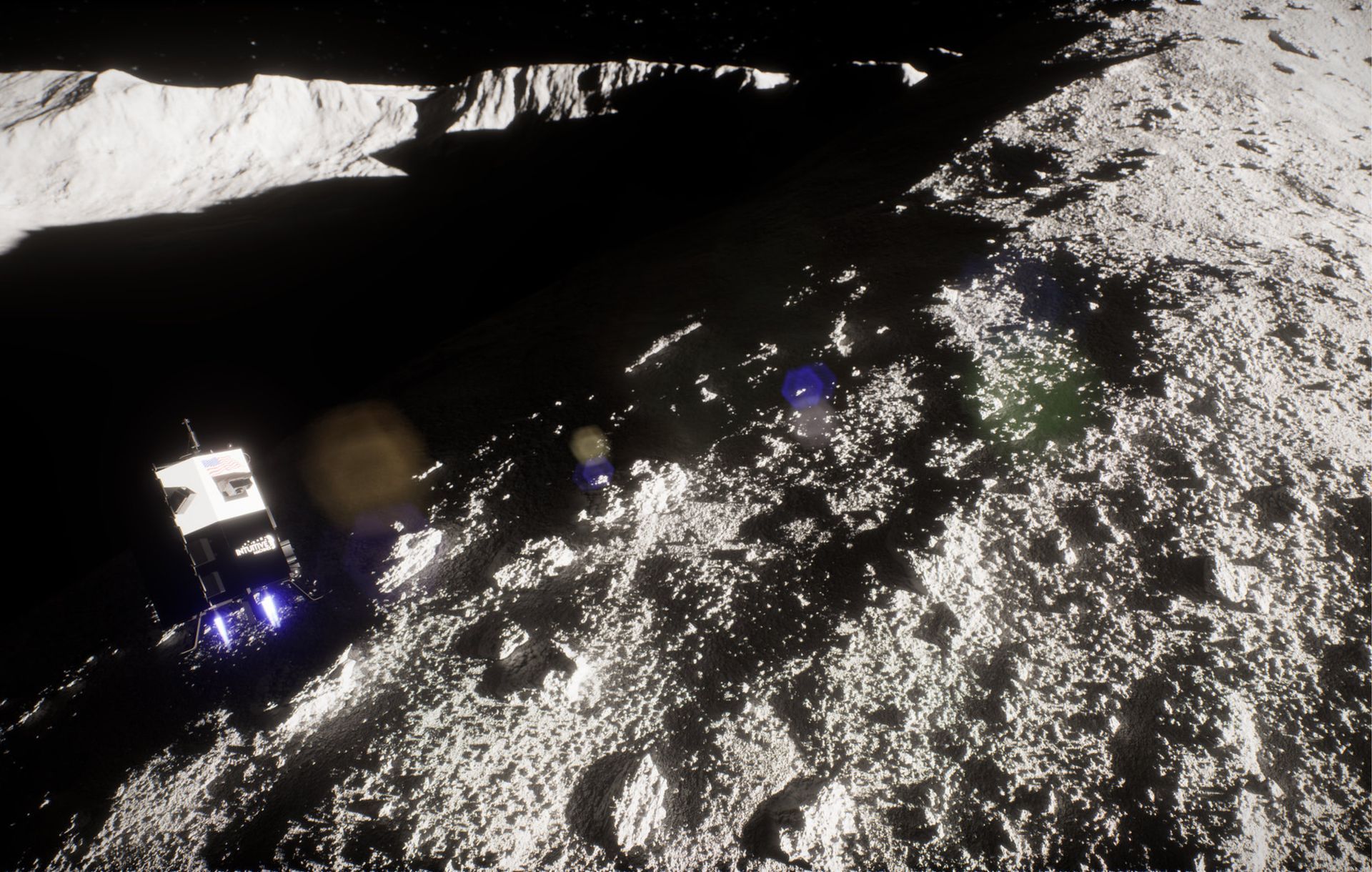
Lonestar will fly with next Intuitive Machines mission (Image: Intuitive Machines)
A commercialising lunar landscape as AMC line-up lunar mission, Lonestar partnership for commercial lunar data
Tokyo-based ispace, Inc. has joined forces with the UK’s Asteroid Mining Corporation (AMC) to explore off-world resource extraction. Together, they plan to send AMC’s SCAR-E robotic explorer to the Moon aboard iSpace’s RESILIENCE lunar lander, with a launch scheduled for December 2024. Designed to navigate challenging lunar terrain, SCAR-E represents a pivotal step toward the companies' goal of developing a complete lunar mission architecture, laying the groundwork for future asteroid mining. This collaboration marks an important milestone in the broader effort to unlock the Moon’s resources.
India, too, is accelerating its lunar ambitions with the approval of its fifth lunar mission, Lupex, a joint venture with Japan. This mission, which focuses on exploring the Moon’s surface for water and other valuable resources, is a key part of India’s long-term plan for crewed missions to the Moon. With Chandrayaan-4 recently cleared by the Union Cabinet, the Lupex mission now moves ahead with backing from the National Space Commission.
In other news, Caddis Cloud Solutions has partnered with Lonestar Data Holdings (US) to develop data storage on the lunar surface. Lonestar, the first company to offer commercial services from the Moon, is leveraging its expertise in lunar edge processing and data security to create a new frontier in digital storage. Their lunar data centres offer an environmentally sustainable alternative to Earth’s energy-intensive facilities, providing secure, resilient data storage for enterprises and government sectors.
From mining lunar resources to securing data on the Moon, these efforts underscore the enormous potential of space to address Earth’s challenges while propelling humanity into the next era of exploration.

(Image: Pixabay)
Smallsats and AI could provide next disruptive moment for space
Artificial intelligence (AI) is emerging as a pivotal force in the fight against cybercrime and also in transforming space technology. At a recent U.S. Department of Justice symposium, discussions focused on AI's dual nature: a powerful tool for security and innovation, but also a weapon in the hands of cybercriminals. Principal Deputy Assistant Attorney General Nicole M. Argentieri outlined new strategies for combatting AI-driven cybercrime, highlighting the need for advanced technologies to monitor and dismantle illicit networks, such as those involved in ransomware and crypto fraud.
AI also continues to provide exciting new innovations in space. Seraphim Space’s latest accelerator program selected 11 startups, 5 of which are working on AI-driven solutions, ranging from satellite broadband to orbital robotics, exemplifying how AI is unlocking new opportunities in space. The companies include Flypix AI, which specialises in Earth imagery analytics, and Rovial, developing AI-enabled robots for orbital infrastructure.
An article this month from Bogdan Gogulan, Managing Partner of NewSpace Capital, also presented the near-term disruption AI could potentially have on the industry. He discussed how AI is already playing a key role in the manufacture of satellites, and also in space traffic management and debris collision avoidance. However, he also highlighted the work of the Belgium-based company Simera Sense, who are aiming to use AI and edge-processing technologies to pre-process satellite data before ing transmitted to Earth stations, revolutionising how massive data can be utilised and transmitted. “Smallsat industry is at a hinge moment in its evolution, and this is all down to the ingenuity of those working in the sector and the transformative power of AI” Gogulan said in the article.
Ultimately, AI’s disruptive influence is set to redefine not just cybersecurity but also the future of space exploration and infrastructure. Whether it’s safeguarding the digital frontiers or propelling humanity further into space, AI is becoming the cornerstone of progress in industries that are crucial to our future. The question now is not whether AI will transform these fields, but how quickly, and how well we manage the immense potential it brings.

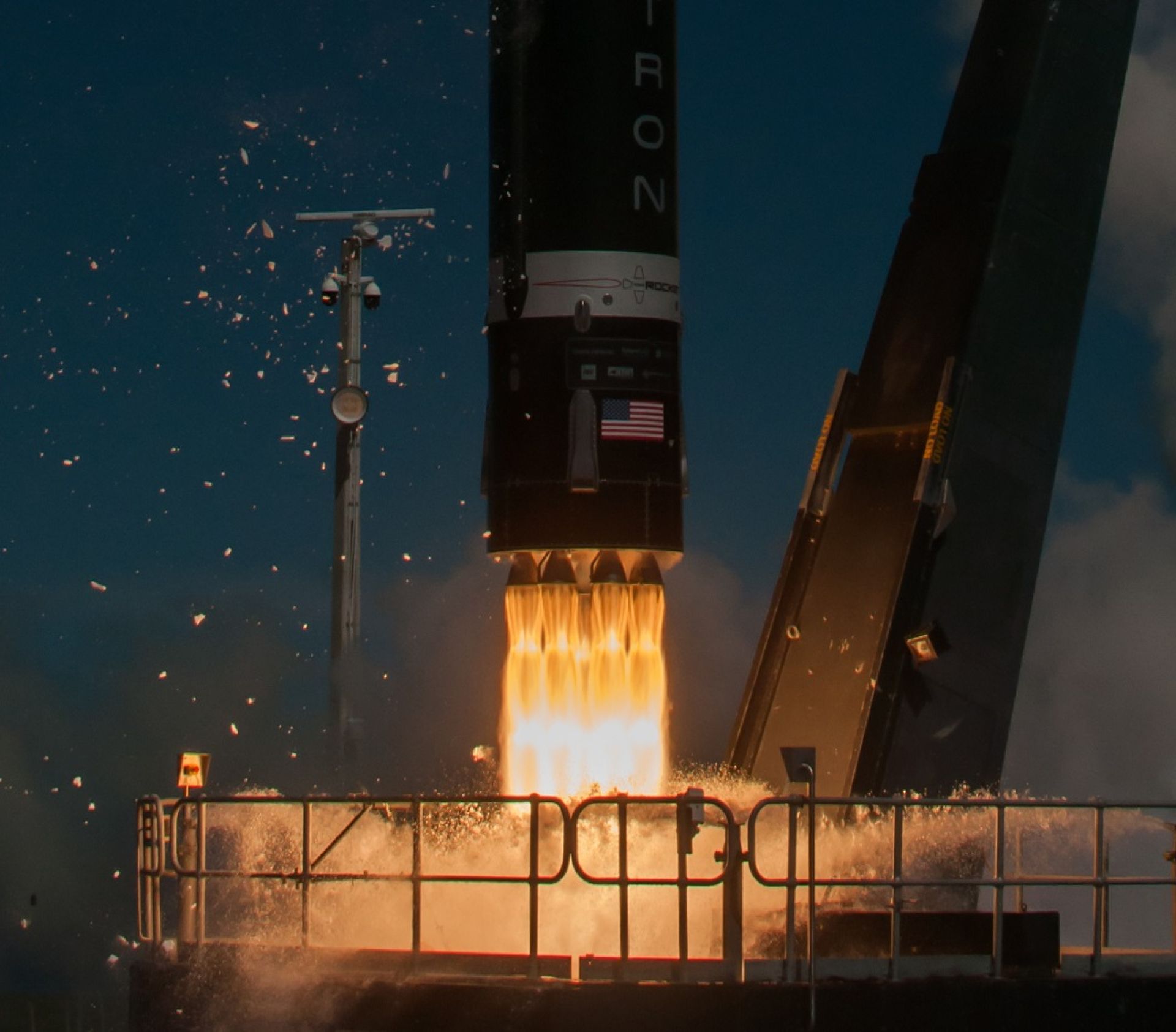
Rocket Lab secure Mars contract (Image: Andrew Burns and Simon Moffatt)
14 October 2024
Uptick in space startup investment, Starship successful launch, Rocket Lab awarded Mars sample contract, and the expanding role of AI - Space News Roundup

The space industry has been witnessing sustained growth in recent years, marked by increased accessibility and reduced costs in space launch, an increase in downstream satellite services and the starting of a new defining era in lunar and outer space exploration and utilisation. Economic analysts had previously forecast the insure to be worth $1 trillion by 2030, and more recently in April this year, the World Economic Forum, in partnership with Mckinsey & Co, have predicted the space economy to be worth $1.8 trillion by 2035.
This isn’t to say that there haven’t been turbulent times innocent years, in the backdrop of the Ukraine conflict and subsequent fuel crisis, as well as deepening economic and geological rivalries elsewhere. Nonetheless, according to Seraphim Space, space startups have raised $1.9 billion in funding in the third quarter this year up a fifth on the year previous. Strong performers have been in the launch market and satellite manufacturing, marking something in a change. Previous investments had been dominated by the data analytics and satellite-imaging.
The UK has also made commitments to enhancing its role in the space sector, announcing the return of its Fusion Connect with Capital Programme, an initiative designed to fast-track small businesses within six months. In addition, the Indian government announced on October 6 that it will provide $119 million to a venture capital firm to fund space startups. Meanwhile, the Australian Space Agency, in partnership with creative agency Amplify, has announced a series of Cultural Briefings aimed at keeping brands aware of cultural developments, with space being viewed as a next-generation-defining theme.
Through the challenges and hurdles, it seems that space exploration and the space industry continues to climb on the global radar.
Starship test launch success and new era of launch vehicles
It’s been a challenging time for the nascent commercial launch industry, if we don’t count SpaceX (although they have and are suffering with some issues relating to their workhorse Falcon-9). Since the failed launch which led to the bankruptcy of Virgin Orbit, the delisting of Astra (US), an unexpected explosion of Rocket Factory Augsburg’s RFA ONE last month and an accidental launch by China’s Space Pioneer in June, amongst others.
However, we also note much positive activity in the commercial launch market, as well as the reported uptick in investment. United Launch Alliance’s Vulcan Centaur launched on Oct. 4, a critical test flight that brings the vehicle closer to certification for carrying national security payloads. This second flight is a key milestone for ULA as it looks to solidify Vulcan Centaur’s role in future national defence missions.
Meanwhile, Dawn Aerospace showcased impressive rapid reusability with its Mk-II Aurora rocket-powered aircraft, conducting two flights within just eight hours from New Zealand’s Glentanner Aerodrome. These tests, reaching speeds of Mach 0.9 and altitudes of 63,000 feet, are part of the company's broader efforts to expand the vehicle’s performance envelope, with the successful demonstration of same-day reusability underlining the potential for cost-effective, rapid turnaround in spaceflight operations.
PLD Space is also ramping up its efforts with the unveiling of its latest strategic plan. One year after the successful launch of MIURA 1, the Spanish company is on track with its MIURA 5 program, aiming to kick off its launch campaign by 2025. Notable advancements include a new re-entry and recovery system for the MIURA 5 1.2 model, which promises enhanced orbital capabilities, increased payload capacity, and lower operational costs, paving the way for more frequent launches.
Additionally, Rocket Lab secured a NASA contract to study the retrieval of rock samples from Mars. This project is part of NASA’s Mars Sample Return (MSR) program, which could revolutionise our understanding of the Red Planet and potentially provide answers about the existence of life on Mars. The results of Rocket Lab’s study will help shape future missions aimed at bringing Mars samples to Earth, a pivotal step in preparing for human exploration of the planet. It also signals the ongoing commercialisation of space, with NASA reaching out to the private sector in order to rescue its troubled MSR programme.
On Oct. 13, SpaceX launched its fifth Starship vehicle, achieving the first-ever successful “catch” of its Super Heavy booster at the launch site. The primary goal of this attempt was to capture the Super Heavy booster using its "chopstick" mechanism, a pair of mechanical arms. The Starship’s first stage followed a similar trajectory to previous tests and completed a powered landing in the Indian Ocean. This success marks another major milestone in SpaceX’s pursuit of rapid, full reusability for the world’s largest space launch vehicle, and is promising news for NASA, which has contracted SpaceX to provide a version of Starship for the crewed Artemis III lunar landing, planned for 2026.
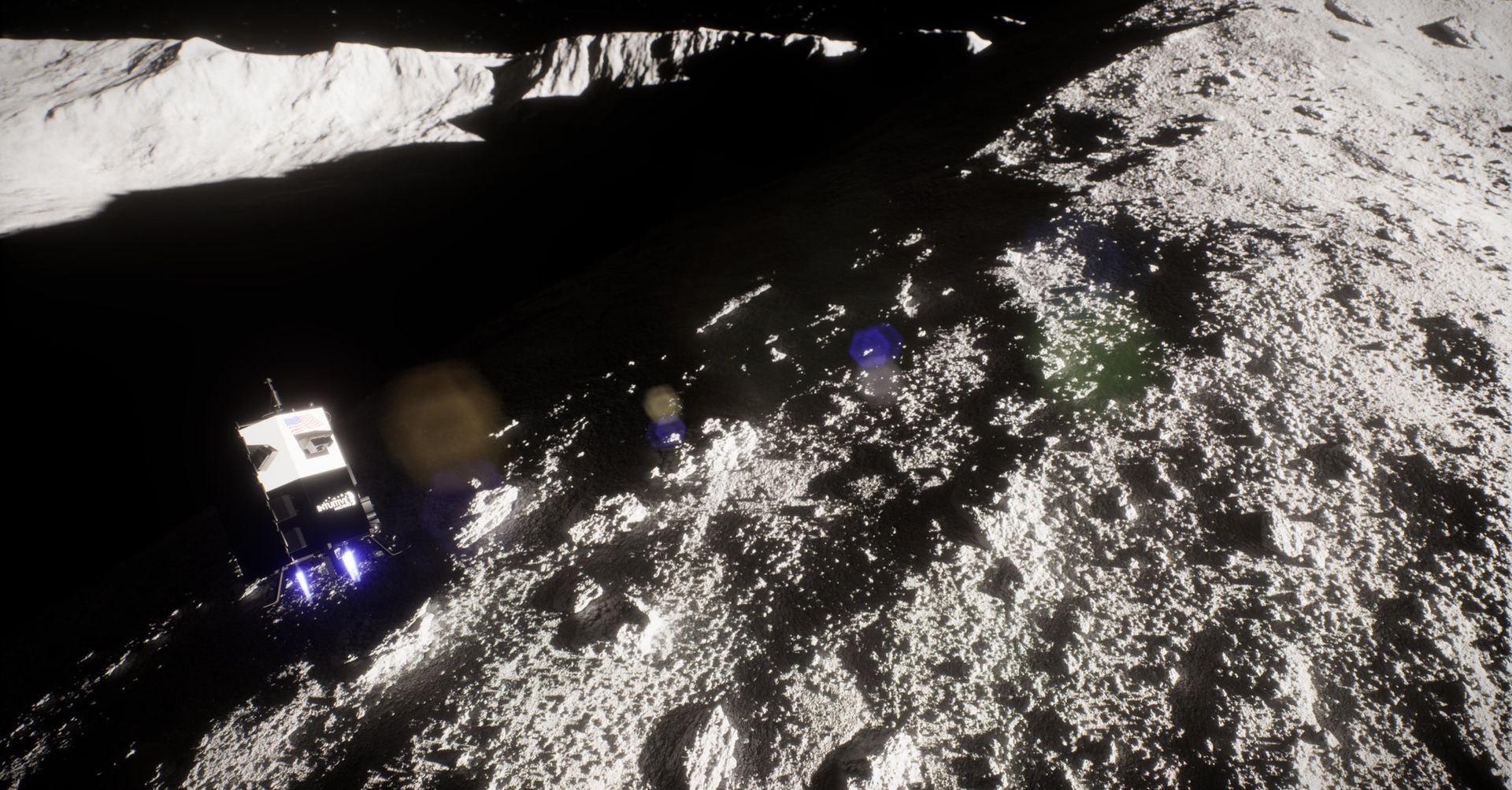
Lonestar will fly with next Intuitive Machines mission (Image: Intuitive Machines)
A commercialising lunar landscape as AMC line-up lunar mission, Lonestar partnership for commercial lunar data
Tokyo-based ispace, Inc. has joined forces with the UK’s Asteroid Mining Corporation (AMC) to explore off-world resource extraction. Together, they plan to send AMC’s SCAR-E robotic explorer to the Moon aboard iSpace’s RESILIENCE lunar lander, with a launch scheduled for December 2024. Designed to navigate challenging lunar terrain, SCAR-E represents a pivotal step toward the companies' goal of developing a complete lunar mission architecture, laying the groundwork for future asteroid mining. This collaboration marks an important milestone in the broader effort to unlock the Moon’s resources.
India, too, is accelerating its lunar ambitions with the approval of its fifth lunar mission, Lupex, a joint venture with Japan. This mission, which focuses on exploring the Moon’s surface for water and other valuable resources, is a key part of India’s long-term plan for crewed missions to the Moon. With Chandrayaan-4 recently cleared by the Union Cabinet, the Lupex mission now moves ahead with backing from the National Space Commission.
In other news, Caddis Cloud Solutions has partnered with Lonestar Data Holdings (US) to develop data storage on the lunar surface. Lonestar, the first company to offer commercial services from the Moon, is leveraging its expertise in lunar edge processing and data security to create a new frontier in digital storage. Their lunar data centres offer an environmentally sustainable alternative to Earth’s energy-intensive facilities, providing secure, resilient data storage for enterprises and government sectors.
From mining lunar resources to securing data on the Moon, these efforts underscore the enormous potential of space to address Earth’s challenges while propelling humanity into the next era of exploration.

(Image: Pixabay)
Smallsats and AI could provide next disruptive moment for space
Artificial intelligence (AI) is emerging as a pivotal force in the fight against cybercrime and also in transforming space technology. At a recent U.S. Department of Justice symposium, discussions focused on AI's dual nature: a powerful tool for security and innovation, but also a weapon in the hands of cybercriminals. Principal Deputy Assistant Attorney General Nicole M. Argentieri outlined new strategies for combatting AI-driven cybercrime, highlighting the need for advanced technologies to monitor and dismantle illicit networks, such as those involved in ransomware and crypto fraud.
AI also continues to provide exciting new innovations in space. Seraphim Space’s latest accelerator program selected 11 startups, 5 of which are working on AI-driven solutions, ranging from satellite broadband to orbital robotics, exemplifying how AI is unlocking new opportunities in space. The companies include Flypix AI, which specialises in Earth imagery analytics, and Rovial, developing AI-enabled robots for orbital infrastructure.
An article this month from Bogdan Gogulan, Managing Partner of NewSpace Capital, also presented the near-term disruption AI could potentially have on the industry. He discussed how AI is already playing a key role in the manufacture of satellites, and also in space traffic management and debris collision avoidance. However, he also highlighted the work of the Belgium-based company Simera Sense, who are aiming to use AI and edge-processing technologies to pre-process satellite data before ing transmitted to Earth stations, revolutionising how massive data can be utilised and transmitted. “Smallsat industry is at a hinge moment in its evolution, and this is all down to the ingenuity of those working in the sector and the transformative power of AI” Gogulan said in the article.
Ultimately, AI’s disruptive influence is set to redefine not just cybersecurity but also the future of space exploration and infrastructure. Whether it’s safeguarding the digital frontiers or propelling humanity further into space, AI is becoming the cornerstone of progress in industries that are crucial to our future. The question now is not whether AI will transform these fields, but how quickly, and how well we manage the immense potential it brings.
Share this article


14 October 2024
Uptick in space startup investment, Starship successful launch, Rocket Lab awarded Mars sample contract, and the expanding role of AI - Space News Roundup

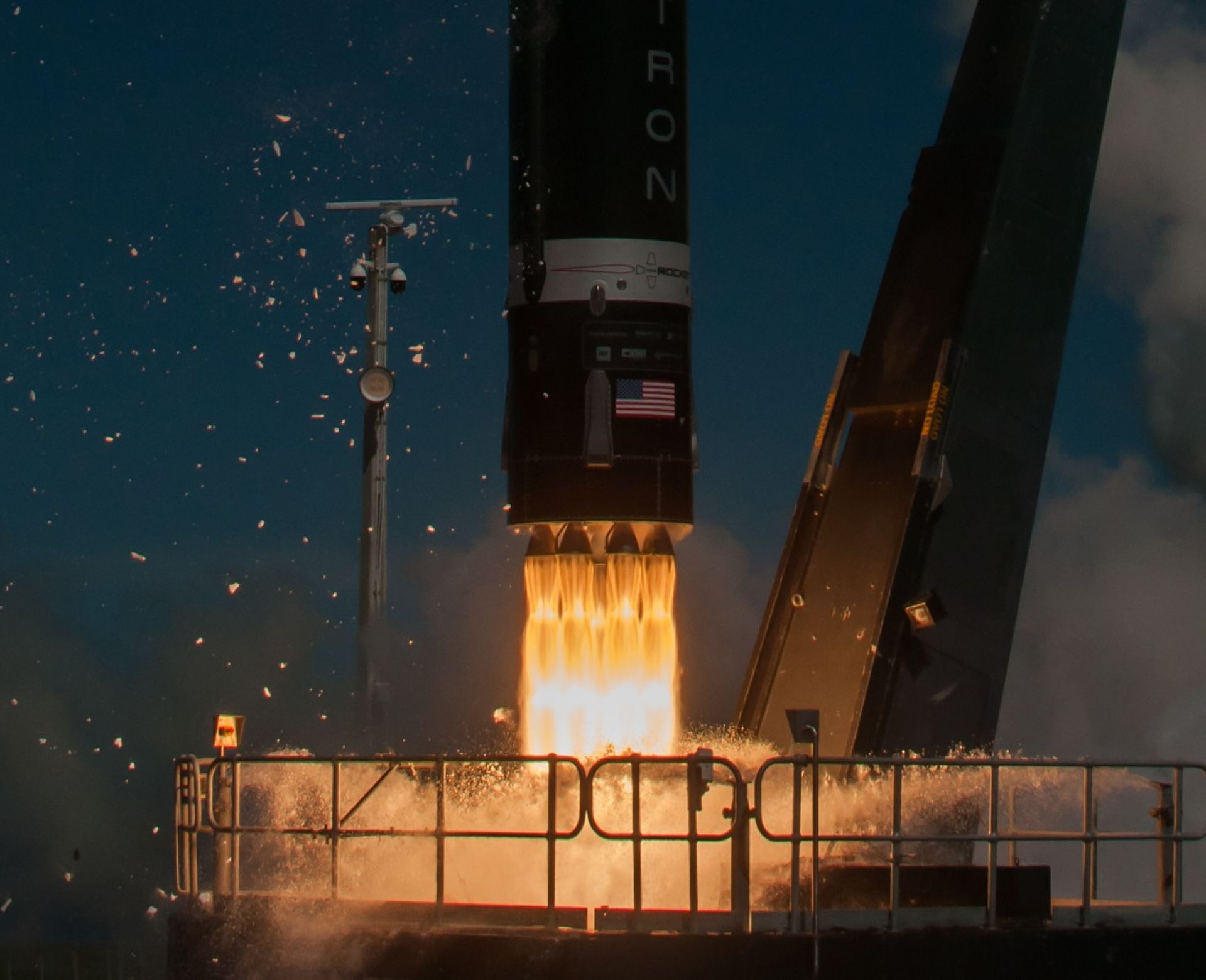
Rocket Lab secure Mars contract (Image: Andrew Burns and Simon Moffatt)
The space industry has been witnessing sustained growth in recent years, marked by increased accessibility and reduced costs in space launch, an increase in downstream satellite services and the starting of a new defining era in lunar and outer space exploration and utilisation. Economic analysts had previously forecast the insure to be worth $1 trillion by 2030, and more recently in April this year, the World Economic Forum, in partnership with Mckinsey & Co, have predicted the space economy to be worth $1.8 trillion by 2035.
This isn’t to say that there haven’t been turbulent times innocent years, in the backdrop of the Ukraine conflict and subsequent fuel crisis, as well as deepening economic and geological rivalries elsewhere. Nonetheless, according to Seraphim Space, space startups have raised $1.9 billion in funding in the third quarter this year up a fifth on the year previous. Strong performers have been in the launch market and satellite manufacturing, marking something in a change. Previous investments had been dominated by the data analytics and satellite-imaging.
The UK has also made commitments to enhancing its role in the space sector, announcing the return of its Fusion Connect with Capital Programme, an initiative designed to fast-track small businesses within six months. In addition, the Indian government announced on October 6 that it will provide $119 million to a venture capital firm to fund space startups. Meanwhile, the Australian Space Agency, in partnership with creative agency Amplify, has announced a series of Cultural Briefings aimed at keeping brands aware of cultural developments, with space being viewed as a next-generation-defining theme.
Through the challenges and hurdles, it seems that space exploration and the space industry continues to climb on the global radar.
Starship test launch success and new era of launch vehicles
It’s been a challenging time for the nascent commercial launch industry, if we don’t count SpaceX (although they have and are suffering with some issues relating to their workhorse Falcon-9). Since the failed launch which led to the bankruptcy of Virgin Orbit, the delisting of Astra (US), an unexpected explosion of Rocket Factory Augsburg’s RFA ONE last month and an accidental launch by China’s Space Pioneer in June, amongst others.
However, we also note much positive activity in the commercial launch market, as well as the reported uptick in investment. United Launch Alliance’s Vulcan Centaur launched on Oct. 4, a critical test flight that brings the vehicle closer to certification for carrying national security payloads. This second flight is a key milestone for ULA as it looks to solidify Vulcan Centaur’s role in future national defence missions.
Meanwhile, Dawn Aerospace showcased impressive rapid reusability with its Mk-II Aurora rocket-powered aircraft, conducting two flights within just eight hours from New Zealand’s Glentanner Aerodrome. These tests, reaching speeds of Mach 0.9 and altitudes of 63,000 feet, are part of the company's broader efforts to expand the vehicle’s performance envelope, with the successful demonstration of same-day reusability underlining the potential for cost-effective, rapid turnaround in spaceflight operations.
PLD Space is also ramping up its efforts with the unveiling of its latest strategic plan. One year after the successful launch of MIURA 1, the Spanish company is on track with its MIURA 5 program, aiming to kick off its launch campaign by 2025. Notable advancements include a new re-entry and recovery system for the MIURA 5 1.2 model, which promises enhanced orbital capabilities, increased payload capacity, and lower operational costs, paving the way for more frequent launches.
Additionally, Rocket Lab secured a NASA contract to study the retrieval of rock samples from Mars. This project is part of NASA’s Mars Sample Return (MSR) program, which could revolutionise our understanding of the Red Planet and potentially provide answers about the existence of life on Mars. The results of Rocket Lab’s study will help shape future missions aimed at bringing Mars samples to Earth, a pivotal step in preparing for human exploration of the planet. It also signals the ongoing commercialisation of space, with NASA reaching out to the private sector in order to rescue its troubled MSR programme.
On Oct. 13, SpaceX launched its fifth Starship vehicle, achieving the first-ever successful “catch” of its Super Heavy booster at the launch site. The primary goal of this attempt was to capture the Super Heavy booster using its "chopstick" mechanism, a pair of mechanical arms. The Starship’s first stage followed a similar trajectory to previous tests and completed a powered landing in the Indian Ocean. This success marks another major milestone in SpaceX’s pursuit of rapid, full reusability for the world’s largest space launch vehicle, and is promising news for NASA, which has contracted SpaceX to provide a version of Starship for the crewed Artemis III lunar landing, planned for 2026.
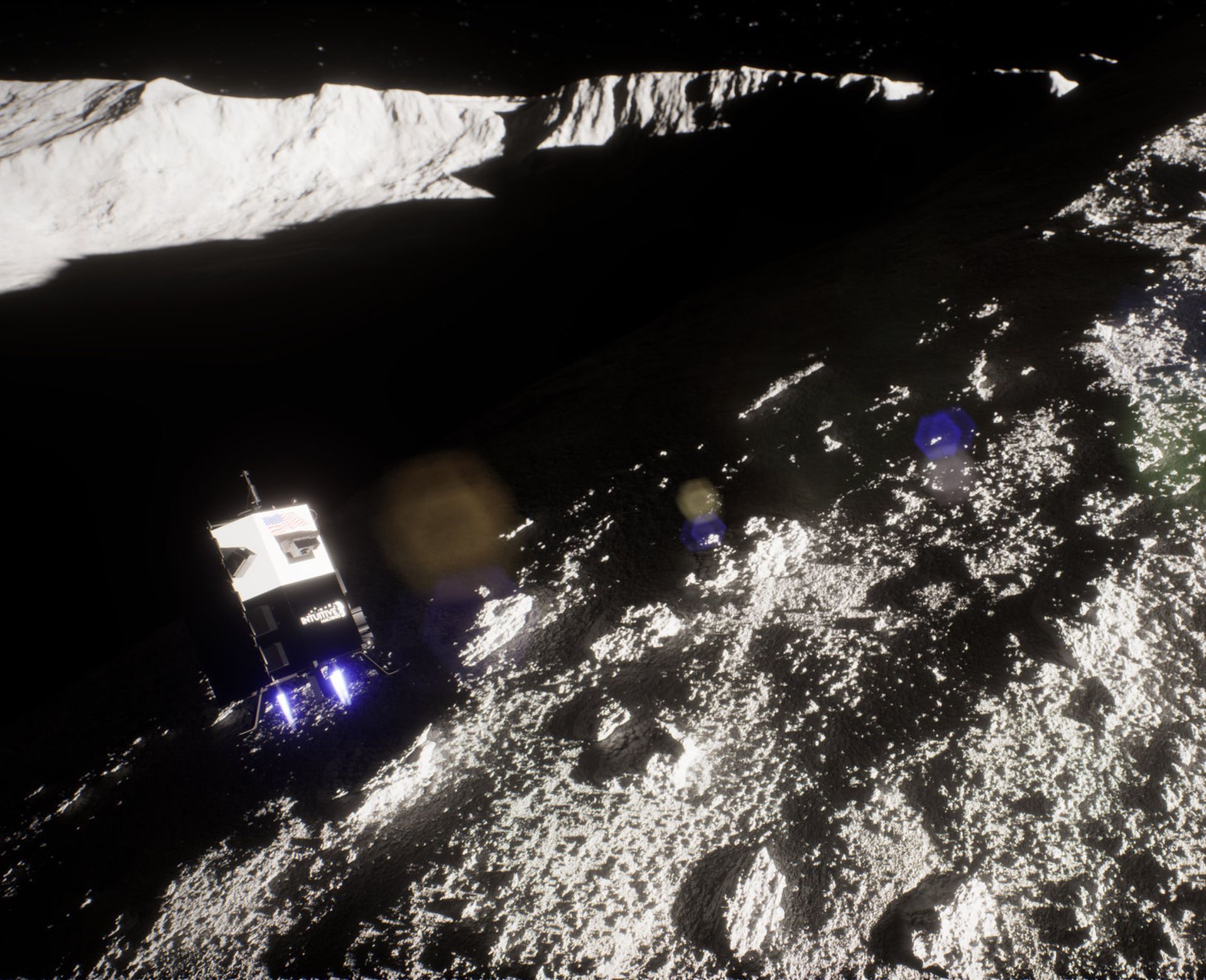
Lonestar will fly with next Intuitive Machines mission (Image: Intuitive Machines)
A commercialising lunar landscape as AMC line-up lunar mission, Lonestar partnership for commercial lunar data
Tokyo-based ispace, Inc. has joined forces with the UK’s Asteroid Mining Corporation (AMC) to explore off-world resource extraction. Together, they plan to send AMC’s SCAR-E robotic explorer to the Moon aboard iSpace’s RESILIENCE lunar lander, with a launch scheduled for December 2024. Designed to navigate challenging lunar terrain, SCAR-E represents a pivotal step toward the companies' goal of developing a complete lunar mission architecture, laying the groundwork for future asteroid mining. This collaboration marks an important milestone in the broader effort to unlock the Moon’s resources.
India, too, is accelerating its lunar ambitions with the approval of its fifth lunar mission, Lupex, a joint venture with Japan. This mission, which focuses on exploring the Moon’s surface for water and other valuable resources, is a key part of India’s long-term plan for crewed missions to the Moon. With Chandrayaan-4 recently cleared by the Union Cabinet, the Lupex mission now moves ahead with backing from the National Space Commission.
In other news, Caddis Cloud Solutions has partnered with Lonestar Data Holdings (US) to develop data storage on the lunar surface. Lonestar, the first company to offer commercial services from the Moon, is leveraging its expertise in lunar edge processing and data security to create a new frontier in digital storage. Their lunar data centres offer an environmentally sustainable alternative to Earth’s energy-intensive facilities, providing secure, resilient data storage for enterprises and government sectors.
From mining lunar resources to securing data on the Moon, these efforts underscore the enormous potential of space to address Earth’s challenges while propelling humanity into the next era of exploration.

(Image: Pixabay)
Smallsats and AI could provide next disruptive moment for space
Artificial intelligence (AI) is emerging as a pivotal force in the fight against cybercrime and also in transforming space technology. At a recent U.S. Department of Justice symposium, discussions focused on AI's dual nature: a powerful tool for security and innovation, but also a weapon in the hands of cybercriminals. Principal Deputy Assistant Attorney General Nicole M. Argentieri outlined new strategies for combatting AI-driven cybercrime, highlighting the need for advanced technologies to monitor and dismantle illicit networks, such as those involved in ransomware and crypto fraud.
AI also continues to provide exciting new innovations in space. Seraphim Space’s latest accelerator program selected 11 startups, 5 of which are working on AI-driven solutions, ranging from satellite broadband to orbital robotics, exemplifying how AI is unlocking new opportunities in space. The companies include Flypix AI, which specialises in Earth imagery analytics, and Rovial, developing AI-enabled robots for orbital infrastructure.
An article this month from Bogdan Gogulan, Managing Partner of NewSpace Capital, also presented the near-term disruption AI could potentially have on the industry. He discussed how AI is already playing a key role in the manufacture of satellites, and also in space traffic management and debris collision avoidance. However, he also highlighted the work of the Belgium-based company Simera Sense, who are aiming to use AI and edge-processing technologies to pre-process satellite data before ing transmitted to Earth stations, revolutionising how massive data can be utilised and transmitted. “Smallsat industry is at a hinge moment in its evolution, and this is all down to the ingenuity of those working in the sector and the transformative power of AI” Gogulan said in the article.
Ultimately, AI’s disruptive influence is set to redefine not just cybersecurity but also the future of space exploration and infrastructure. Whether it’s safeguarding the digital frontiers or propelling humanity further into space, AI is becoming the cornerstone of progress in industries that are crucial to our future. The question now is not whether AI will transform these fields, but how quickly, and how well we manage the immense potential it brings.
Share this article

